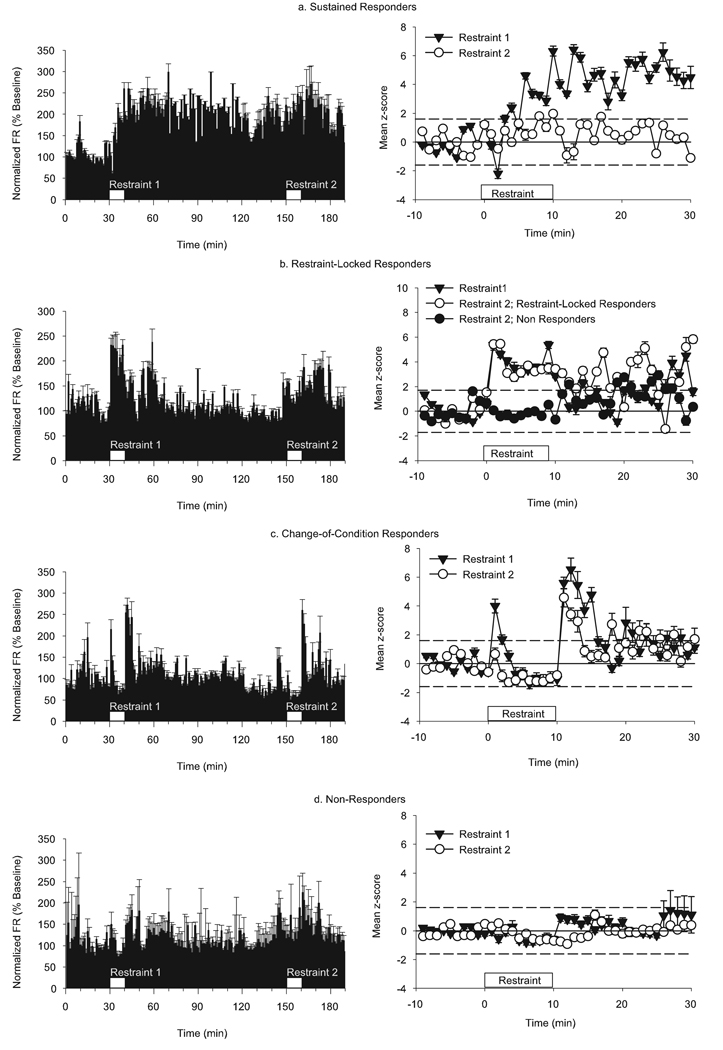FIG. 3.
Modified responses to repeated restraint. The left column shows normalized (% baseline) population responses of the four response groups during the entire 3-h experiment with repeated episodes of restraint (white boxes). The right column shows mean z-score of the responses to restraint 1 and the subsequent response of the same neurons to restraint 2. Dashed lines indicate significant z-scores (P< 0.05). (a) Neurons that had a sustained response to restraint 1 (solid triangles) had no significant response to restraint 2 (open circles). (b) The majority (75%) of the neurons that had restraint-locked response to restraint 1 (solid triangles) exhibited the same duration and magnitude of response to restraint 2 (open circles). Nevertheless, 25% of these neurons became non-responders (solid circles). (c) All neurons in the bi-phasic cluster exhibited the response to restraint 2 (open circles) as they did to restraint 1 (solid triangles); however, the magnitude of their response to changes in either condition was attenuated. (d) All neurons that were non-responders during restraint 1 (solid triangles) remained non-responsive to restraint 2 (open circles).

